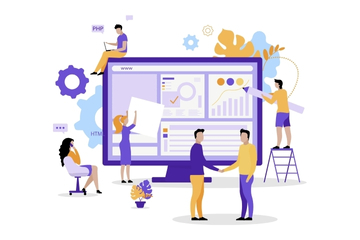
Welcome to V1 Academy! In the rapidly evolving domains of Data Science and Machine Learning, Python stands out as a crucial language due to its versatility, ease of learning, and vast ecosystem of libraries. As part of our commitment to empowering individuals with cutting-edge skills, we present this comprehensive guide to help you get started with Python for Data Science and Machine Learning.
Why Python?
Pythons prominence in Data Science and Machine Learning can be attributed to several key factors:
Setting Up Your Python Environment
Installing Python
Start by installing the latest version of Python from the official Python website. Follow the installation guide relevant to your operating system.
Choosing an IDE or Text Editor
Selecting the right development environment enhances productivity. Popular choices include:
Creating Virtual Environments
Virtual environments allow you to manage dependencies for different projects. Use venv or virtualenv to create an isolated environment:
Core Python Libraries for Data Science and Machine Learning
NumPy
NumPy is foundational for numerical computing in Python, offering support for large, multi-dimensional arrays and matrices, along with a collection of mathematical functions.
Pandas
Pandas provides data structures and functions designed to make data manipulation and analysis simple and intuitive.
Matplotlib and Seaborn
For data visualization, Matplotlib and Seaborn are indispensable. Matplotlib offers comprehensive plotting functions, while Seaborn builds on it with a higher-level interface.
scikit-learn
scikit-learn is essential for machine learning, offering tools for data preprocessing, model selection, and evaluation.
Python in the Data Science Workflow
Data Collection
Data collection can involve pulling data from various sources, including databases, APIs, and web scraping. Python simplifies these processes with libraries like requests and BeautifulSoup.
Data Cleaning
Cleaning the data involves handling missing values, removing duplicates, and correcting inconsistencies.
Exploratory Data Analysis (EDA)
EDA involves understanding the main characteristics of the data, often using statistical summaries and visualizations.
Feature Engineering
Feature engineering transforms raw data into features that better represent the underlying problem to predictive models.
Model Training and Evaluation
Model training involves selecting an algorithm, fitting it to the data, and evaluating its performance using metrics like accuracy or mean squared error.
Model Deployment
Deploying a model involves integrating it into a production environment, where it can process new data and provide predictions.
Advanced Python Topics
Deep Learning
Keras and TensorFlow facilitate the development of deep learning models, which excel in tasks like image recognition and natural language processing.
Natural Language Processing (NLP)
Python's NLP capabilities, with libraries like spaCy and NLTK, allow for processing and analyzing text data.
Time Series Analysis
Time series analysis is crucial for forecasting and analyzing temporal patterns. Libraries like Prophet simplify this process.
Conclusion
Pythons capabilities in Data Science and Machine Learning make it a powerful tool for anyone looking to dive into these fields. By mastering the core libraries and understanding the workflow from data collection to model deployment, you can leverage Python to analyze data and develop robust machine learning models. At V1 Academy, we are committed to guiding you through this journey. Whether you aim to specialize in Data Science, Machine Learning, or pursue a website developer course in Kolkata, our resources and courses are designed to help you achieve your goals.
For more details on website developer course in Kolkata , connect with the team!

No Experience? No Problem. Here's Why a Basic Computer Course Could Be Your Best First Step

Design Your Future: Why a Graphic Design Course Is More Than Just Art

Why Every Student - No Matter the Degree - Should Learn to Code

From Learner to Innovator: How a Mobile App Development Course Can Accelerate Your Career

Your Passion, Your Code, Your Triumph: Learn Programming to Conquer Your Fears

Turn Your Imagination into Income: Why Graphic Design Is the Skill You Need Now

Own Your Destiny: Why Every Student Must Learn SEO & Digital Marketing Now

Feeling Lost After 12th? Discover How Mobile App Development Can Shape Your Bright Future

What They Don’t Teach in YouTube Tutorials: 5 Web Development Secrets Only Real Courses Offer

Dreaming of a Career in Tech? Start Here with Our Programming & Development Course

Can You Learn Computers Without Any Experience? YES, and Here’s How

Tired of Feeling Left Behind? Learn Digital Marketing and Take Control of Your Future